Search Results
Showing all results for: “Crystals”
Fine Jewelry University (Show All FJU Articles)
-
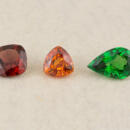
Gem in the Spotlight: Garnet
… lantern to navigate the Ark at night. The ancient world is full of praise for the carbuncle, the glowing red gemstone we now know as garnet. Early scientists named garnet from the Latin granatus, which means ‘seedlike’ because garnet crystals in rock reminded them of the shape and color of pomegranate seeds. Garnet is really a group of gemstones. The pyrope, almandine and spessartite are the red – brown to orange sometimes with a tint of violet varieties. The grossular, …
-
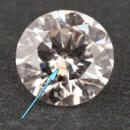
What Are Lab Grown Diamonds?
… the gemological world, synthetic is a highly technical term. When speaking technically, synthetic gems are man-made crystals with the same crystal structure and chemical composition as the specific gem that is being created. Therefore, a “…. The important takeaway for now is that both of these processes are highly advanced technologies that produce crystals with the exact same chemical structure and optical properties as natural diamonds. Now, let’s compare lab grown diamonds …
-
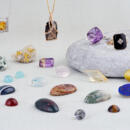
Gem in the Spotlight: Quartz
… have a long tradition of being special to people. Microcrystalline means that the stone is made up of smaller crystals and not one big crystal. Sometimes you can see this structure with your naked eye as with Drusy Quartz, or you may need … White quartz with gold matrix laced through it (also called Gold Quartz or Gold in Quartz) Drusy Quartz Very small crystals in a layer of matrix The Cryptocrystalline Varieties of Quartz There is one more crystal formation of quartz called …
-
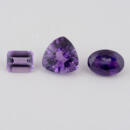
Gem in the Spotlight: Amethyst
… Smithsonian Institution, National Museum of Natural History. The amethyst was most likely mined in Brazil and exhibits a deep, rich purple color. Amethyst also naturally occurs as geodes (rock that contains a hollow cavity lined with crystals) and the most famous of these is the largest ever found. This amazing stone named “The Empress of Uruguay” stands 10.7 feet tall and weighs over 5,500 pounds! Care and Cleaning Amethyst is a relatively low-maintenance gemstone and can…
-
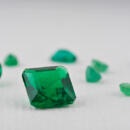
Gem in the Spotlight: Emerald
… is that they often contain inclusions. Sometimes these inclusions are referred to as jardin (the French word for garden) because they look like moss or a garden inside of the stone. These inclusions are tiny fissures, bubbles, or crystals that are visible to the naked eye. These inclusions are not necessarily considered flaws but rather add character and uniqueness to the stone. At this point in history, almost every emerald has had some level of treatment to make the …
-
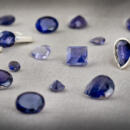
Gem in the Spotlight: Iolite
… is an optical phenomenon in which a substance appears to be different colors when observed at different angles, especially with polarized light. Pleochroism is caused by differing absorption of light rays in doubly refractive crystals. Thus, no singly refractive gemstone can exhibit pleochroism. The process works because of the ability of a gem to absorb different wavelengths of transmitted light depending upon its crystallographic orientations. Iolite is one of the most …
Blog Posts
-

Meet the Jewelers: Sacramento Indie Jewelry Designers
… and sports photography. In her free time, she enjoys creating digital and traditional illustrations. Artist’s Statement: My current collection is called “Birdwatch” and focuses on various whimsical and detailed birds perched on raw crystals, stones, and wood, showcasing polished and intricate metalwork carefully balanced with rougher foundations, just as we see with real birds, who are masters of balance and adaption. I prefer to make use recycled scrap metals which I pour…